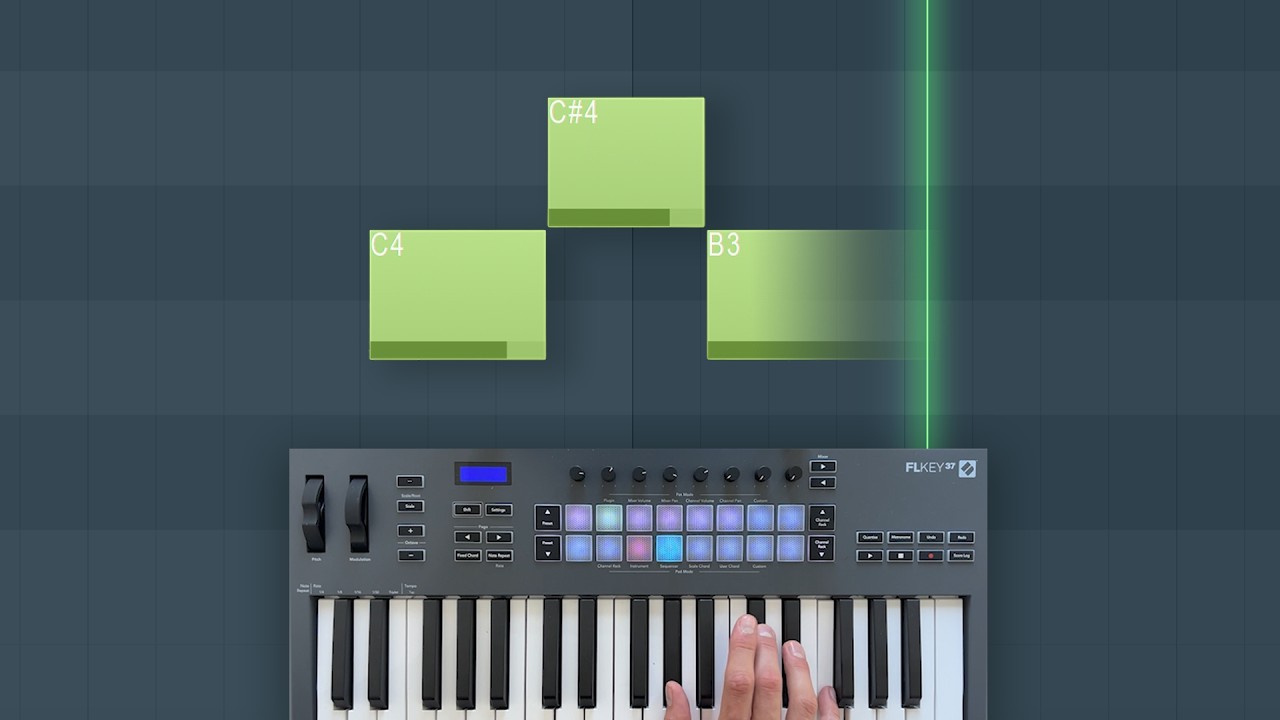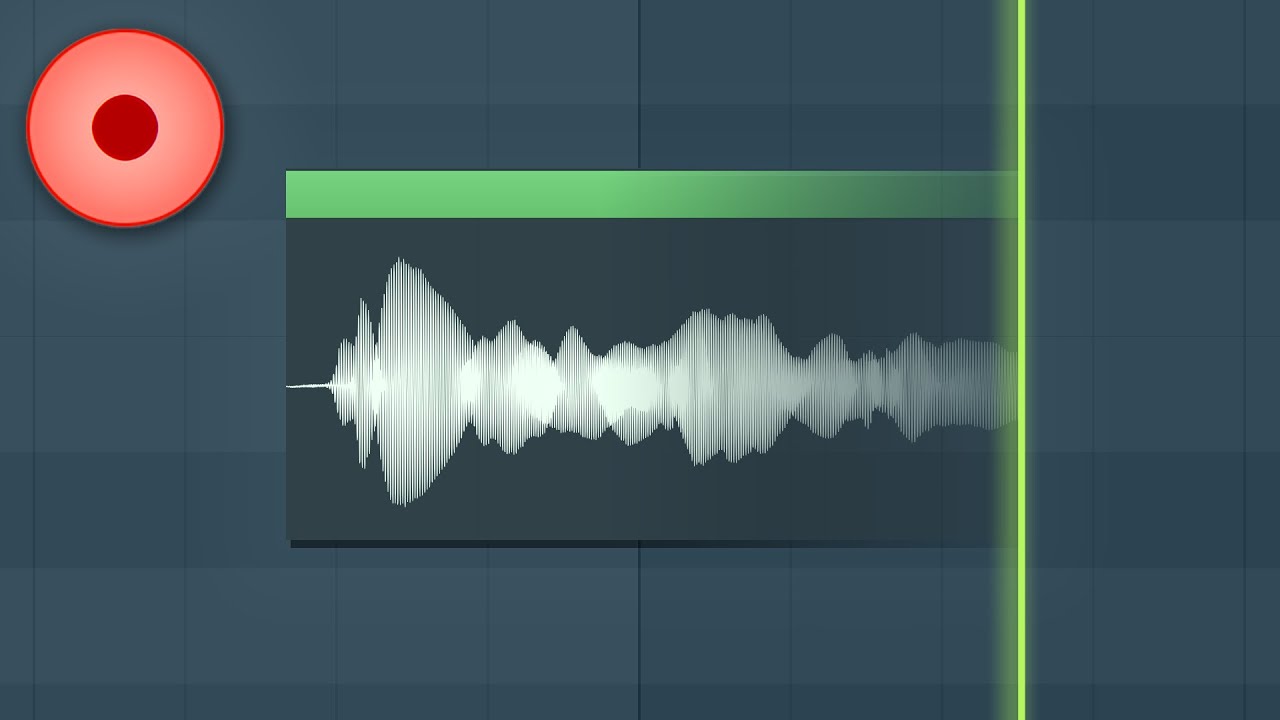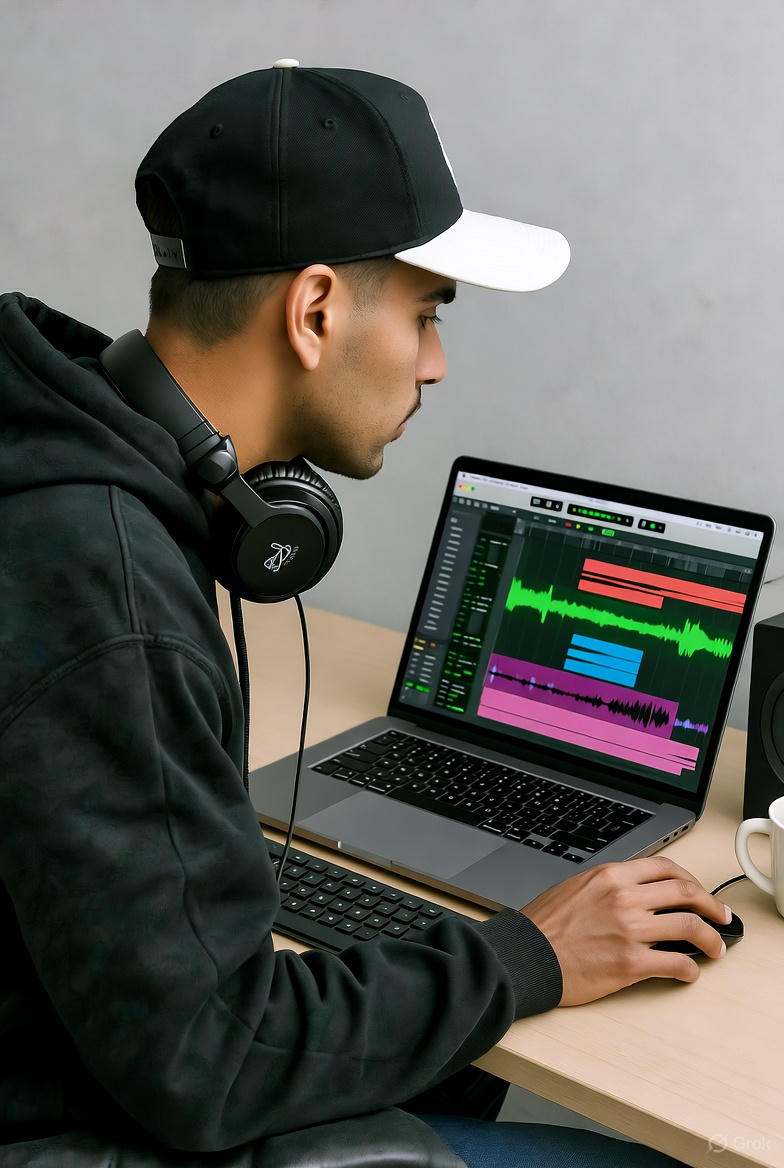!Let Us HELP YOU!
We have a lot of curated content on this blog.
Take this simple 20 second Quiz to Help You
Find The Exact Content You Are Looking For!
Beatmaking shapes the backbone of today’s music, powering genres from hip hop to pop with rhythms that audiences feel before they even realize it. Surprising, right? Over 87 percent of Billboard Top 100 songs now rely on beats built using digital audio workstations, turning bedroom producers into industry leaders. Most people think beatmaking is all about technical tricks, but it is actually a bold form of storytelling that transforms simple sounds into emotion-packed narratives.
Table of Contents
- Defining Beatmaking: The Foundation of Music Production
- The Importance of Beatmaking in Modern Music Genres
- Exploring the Tools and Techniques Used in Beatmaking
- Key Elements: Rhythm, Melody, and Harmony in Beatmaking
- The Creative Process: From Idea to Finished Beat
Quick Summary
| Takeaway | Explanation |
|---|---|
| Beatmaking is a foundational music skill | It creates the rhythmic backbone for modern genres like hip hop, electronic, and pop music. |
| Utilize Digital Audio Workstations for creation | DAWs provide essential tools for sound manipulation and organization, enhancing creativity and technical capabilities. |
| Understand the importance of rhythm, melody, and harmony | These elements are crucial for crafting compelling beats and emotionally engaging compositions. |
| Embrace sampling techniques for innovation | Chopping and rearranging audio samples allow producers to transform existing sounds into unique musical pieces. |
| Maintain a balance of technical skill and artistic vision | A successful beat combines precision with creativity, enabling dynamic storytelling through music. |
Defining Beatmaking: The Foundation of Music Production
Beatmaking represents a sophisticated creative process where musicians and producers craft rhythmic foundations for musical compositions. At its core, beatmaking transforms raw musical elements into structured sonic landscapes that form the heartbeat of contemporary music genres like hip hop, electronic, and pop.
The Sonic Architecture of Beatmaking
Beatmaking goes beyond simple rhythm creation. It involves intricate sound design, sampling techniques, and digital manipulation that transform ordinary sounds into extraordinary musical experiences. According to research from Berklee College of Music, beatmaking requires understanding multiple critical components:
- Tempo Control: Establishing the foundational rhythm and pace
- Instrumentation Selection: Choosing sounds that complement each other
- Rhythmic Feel: Creating unique groove and musical character
- Sonic Density: Layering sounds for depth and complexity
Tools and Creative Expression
Modern beatmaking combines technical skill with artistic vision. Digital Audio Workstations (DAWs) have revolutionized this craft, providing producers unprecedented control over sound manipulation.
Producers now use sophisticated software to:
- Chop and rearrange audio samples
- Apply complex effects and processing
- Create entirely new sonic textures
While technology plays a crucial role, the true art of beatmaking remains deeply personal. Each producer brings their unique perspective, transforming digital tools into instruments of creative expression. If you want to dive deeper into advanced techniques, read more about beat making strategies.
Beatmaking represents more than technical skill it is a dynamic form of musical storytelling where rhythm becomes a language of its own.
The Importance of Beatmaking in Modern Music Genres
Beatmaking has emerged as a transformative force in contemporary music, reshaping how artists create, produce, and experience sound across multiple genres. More than a technical skill, beatmaking represents a dynamic cultural language that bridges musical traditions and innovative sonic expression.
Cultural Significance and Musical Evolution
According to research from the Research Catalogue, beatmaking serves as a critical mechanism for musical innovation, enabling artists to deconstruct and reimagine traditional musical structures. Its importance extends far beyond rhythm production, functioning as a powerful medium of artistic communication.
Key genres profoundly influenced by beatmaking include:
- Hip Hop: Where beatmaking originated and remains central
- Electronic Dance Music: Relying heavily on complex beat architectures
- Pop Music: Incorporating sophisticated rhythmic foundations
- R&B: Utilizing intricate beat designs for emotional storytelling
Economic and Creative Implications
Beatmaking has transformed from a niche skill to a significant economic ecosystem. Producers can now monetize their craft through multiple channels, creating opportunities beyond traditional music production. If you are interested in exploring financial opportunities, check out our guide on making money with beats.
The democratization of music production technology has further amplified beatmaking’s significance. Digital Audio Workstations and affordable software have lowered entry barriers, allowing more artists to experiment and develop unique sonic identities.
Beatmaking represents more than technical prowess it is a nuanced art form that continuously pushes musical boundaries, connecting cultural expression with technological innovation.
Exploring the Tools and Techniques Used in Beatmaking
Beatmaking requires a sophisticated blend of technological tools and creative techniques that transform raw musical ideas into compelling sonic experiences. Modern producers leverage an array of digital and analog resources to craft unique rhythmic landscapes that define contemporary music.
WEBSITE RESOURCES FOR MUSICIANS
Digital Audio Workstations and Software Instruments
Digital Audio Workstations (DAWs) serve as the primary canvas for beatmaking, providing producers comprehensive environments for sound creation and manipulation. According to research exploring algorithmic music composition, these platforms now integrate advanced technological capabilities that extend far beyond traditional recording methods.
Key software tools for beatmaking include:
To help clarify the differences and strengths of the most popular beatmaking platforms, the following table compares key software tools mentioned in the article.
| Beatmaking Software | Genre Preference | Notable Features |
|---|---|---|
| Ableton Live | Electronic music | Excellent for live performance and session view |
| FL Studio | Hip hop, trap | Intuitive step sequencer and pattern arrangement |
| Logic Pro | Studio/professional music | Advanced recording and built-in instruments |
| Native Instruments Maschine | Hybrid/varied | Integrated hardware and software workflow |
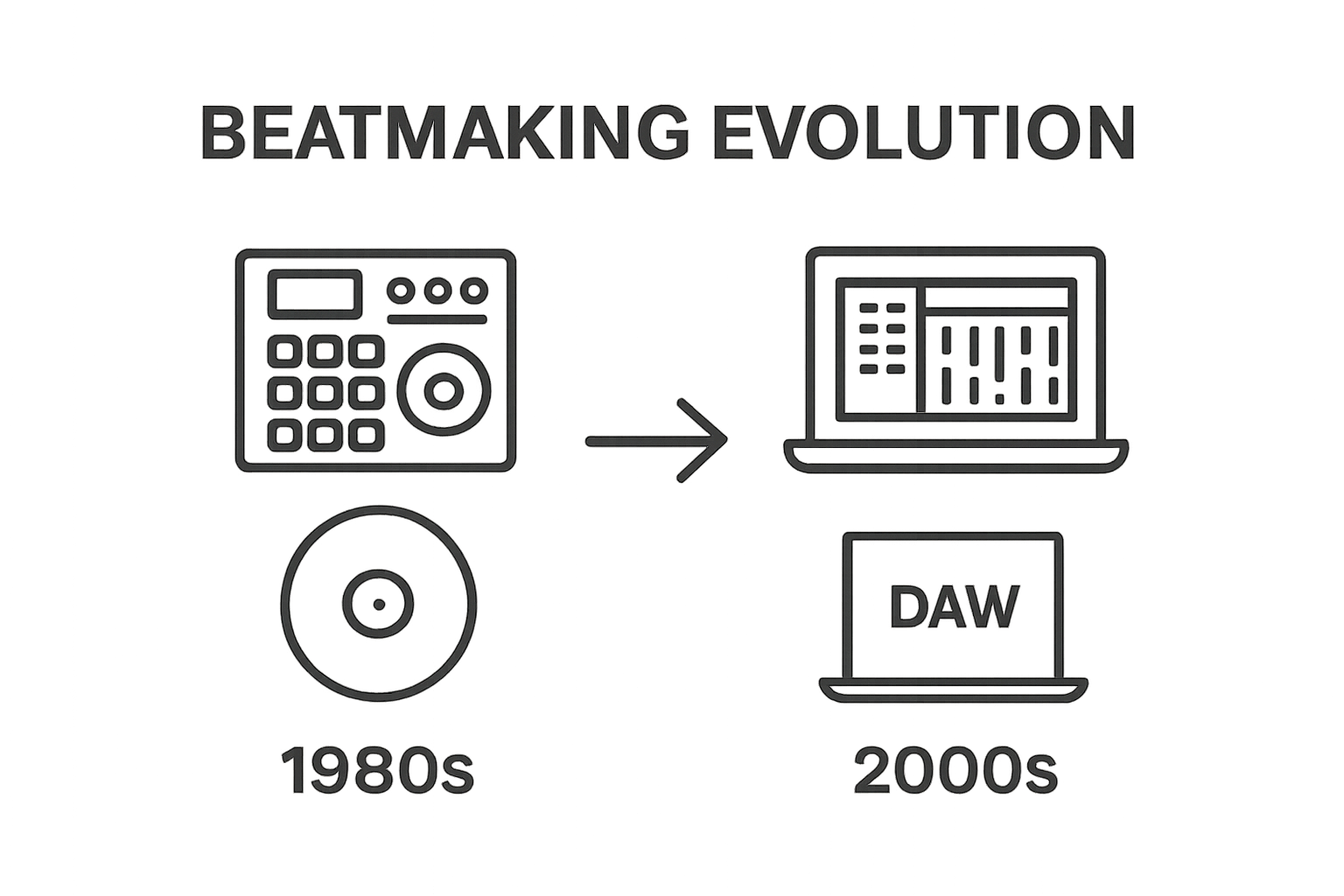
- Ableton Live: Known for exceptional electronic music production
- FL Studio: Popular among hip hop and trap producers
- Logic Pro: Preferred by professional studio musicians
- Native Instruments Maschine: Hybrid hardware and software solution
Sampling and Sound Design Techniques
Sampling represents a cornerstone technique in beatmaking, allowing producers to deconstruct and reimagine existing sounds. Producers transform short audio snippets into complex musical elements through:
- Chopping and rearranging audio fragments
- Applying complex audio effects
- Layering multiple sound sources
The evolution of beatmaking tools continues to blur lines between technology and artistic expression, enabling producers to create increasingly sophisticated and innovative musical experiences. Modern beatmaking is less about technical perfection and more about pushing creative boundaries through intelligent sound design.
Key Elements: Rhythm, Melody, and Harmony in Beatmaking
Beatmaking represents a complex musical art form where rhythm, melody, and harmony converge to create compelling sonic experiences. Understanding these fundamental elements allows producers to craft sophisticated musical compositions that transcend simple beat production.
Rhythm: The Foundational Pulse
Rhythm serves as the heartbeat of any beat, establishing the fundamental groove and emotional character of a musical piece. It determines how listeners physically and emotionally connect with the music, creating a sense of movement and anticipation.
Key rhythmic components include:
- Tempo: The speed and pace of the beat
- Groove: The distinctive rhythmic feel or swing
- Syncopation: Unexpected rhythmic accents
- Percussion Patterns: Intricate drum and percussion arrangements
Melody and Harmonic Complexity
Melody and harmony transform rhythmic foundations into rich, emotionally resonant musical statements. Producers layer melodic elements to create depth and complexity, using various techniques to manipulate sound.
Harmonic strategies in beatmaking involve:
- Chord progressions
- Melodic counterpoint
- Tonal variations
- Textural sound design
The interplay between rhythm, melody, and harmony determines a beat’s unique character, allowing producers to communicate complex emotional landscapes through sound.
This table summarizes the main elements that form the foundation of beatmaking, organizing how rhythm, melody, and harmony each contribute to the overall creative process.
| Element | Role in Beatmaking | Key Characteristics |
|---|---|---|
| Rhythm | Establishes groove and emotional connection | Tempo, groove, syncopation, percussion |
| Melody | Adds emotional depth and musical identity | Lead lines, motifs, melodic layers |
| Harmony | Provides complexity and tonal richness | Chord progressions, counterpoint, variations |
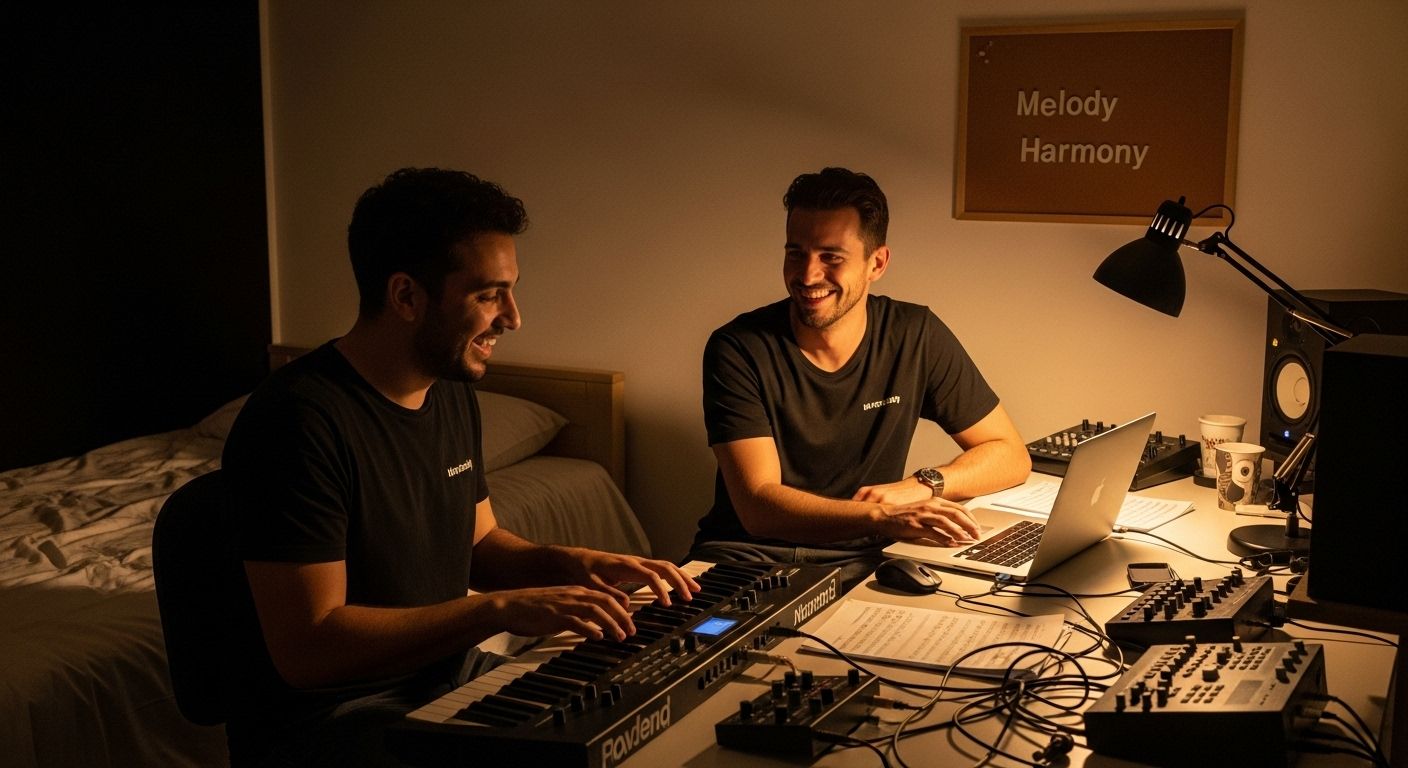 Modern beatmaking transcends technical skill, emerging as a nuanced form of musical storytelling that bridges technological innovation with artistic expression.
Modern beatmaking transcends technical skill, emerging as a nuanced form of musical storytelling that bridges technological innovation with artistic expression.
The Creative Process: From Idea to Finished Beat
Beatmaking transforms abstract musical concepts into tangible sonic experiences through a complex, multifaceted creative journey. Each beat represents a unique narrative crafted through intentional sound design and artistic vision, bridging technical skill with creative expression.
Inspiration and Initial Conceptualization
The creative process begins with a spark of inspiration that can emerge from diverse sources. Producers draw musical ideas from personal experiences, emotional landscapes, cultural influences, and unexpected sonic discoveries. Musical inspiration is rarely linear, requiring producers to remain open to unexpected creative pathways.
Key sources of beatmaking inspiration include:
- Personal emotional states
- Cultural and musical heritage
- Unexpected sound environments
- Other musical genres and compositions
- Technological exploration
Sound Design and Iterative Development
Once an initial concept emerges, producers enter a sophisticated phase of sound design and iterative refinement. This stage involves experimenting with various sonic elements, manipulating samples, and constructing intricate rhythmic architectures.
For deeper insights into beat creation techniques, explore our guide on creating unique rap beats.
Producers typically navigate multiple creative stages:
- Rough sketch and initial arrangement
- Layering and textural complexity
- Rhythmic and harmonic refinement
- Critical listening and editing
The journey from initial concept to finished beat represents a delicate balance between technical precision and creative intuition. Successful beatmaking transcends mechanical reproduction, emerging as a profound form of musical storytelling that communicates complex emotional landscapes through carefully constructed sonic experiences.
Ready to Turn Beatmaking Theory Into Real Tracks?
Have you ever felt overwhelmed trying to turn creative ideas into polished beats? The article explores all the essentials of beatmaking, including rhythm, melody, harmony, and the critical role of modern DAWs like Logic and FL Studio. But absorbing the science behind great beats and actually making them are two different challenges. Many creators struggle with moving from inspiration to finished track, or knowing where to find the best tools and tutorials that fit their style.
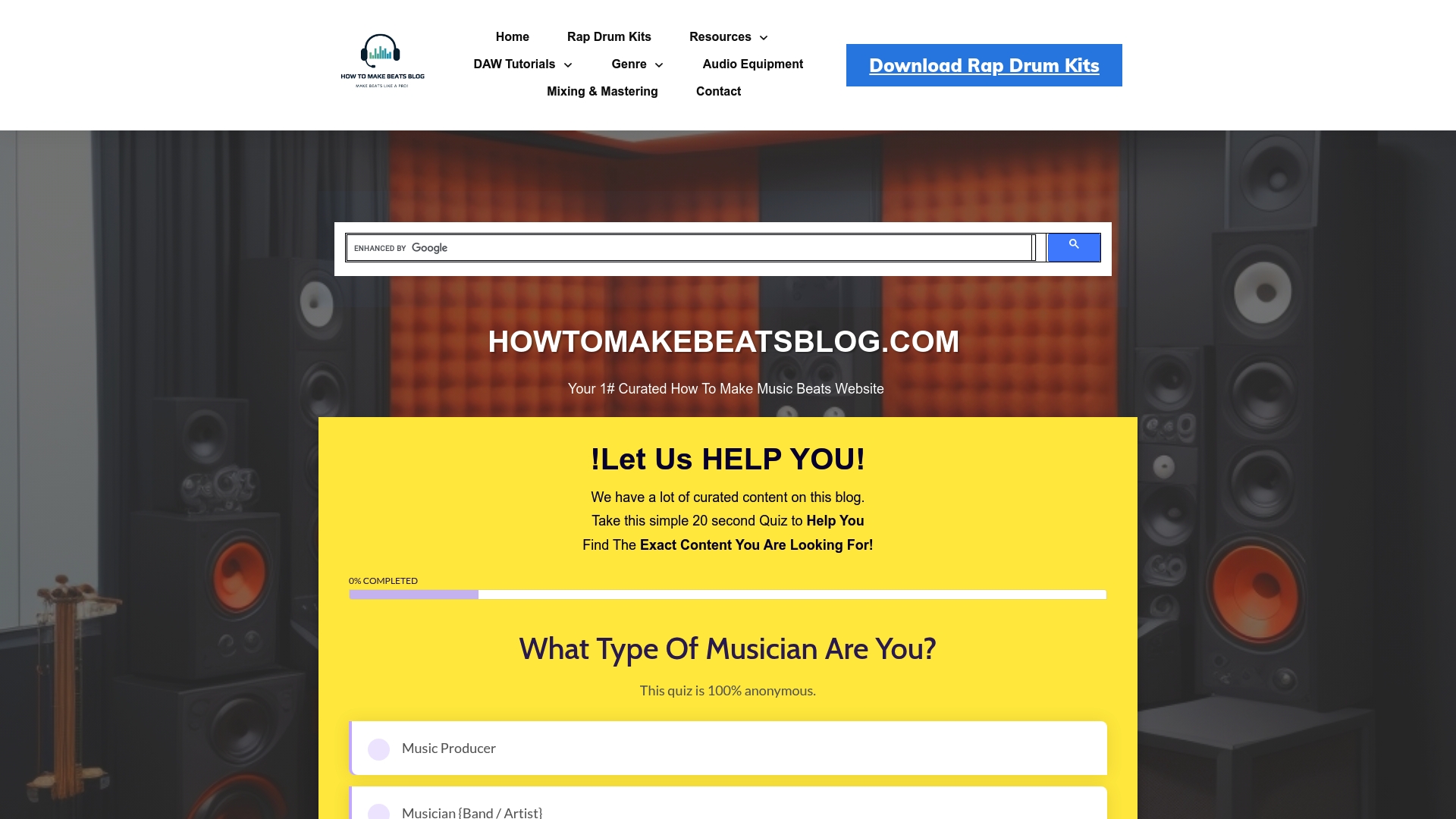
This is where your journey continues.
- Learn step-by-step with our DAW tutorials for every major platform
- Explore beatmaking tips for hip hop, trap, EDM, and more
- Find reviews for MIDI gear, drum kits, and the latest samples tailored for the sounds you care about
If you want to put theory into action and start producing beats with confidence, head to https://howtomakebeatsblog.com now. Discover practical guides, gear reviews, and expert advice that will help you move from learning to creating. Do not let your next beat idea stay stuck in your head.
Frequently Asked Questions
What is beatmaking?
Beatmaking is the process of creating rhythmic foundations for music through sound design, sampling, and digital manipulation, primarily used in genres like hip hop, electronic, and pop music.
What tools are commonly used in beatmaking?
Producers typically use Digital Audio Workstations (DAWs) like Ableton Live, FL Studio, Logic Pro, and Native Instruments Maschine to create, edit, and arrange beats.
How does rhythm influence beatmaking?
Rhythm serves as the foundation of a beat, establishing its groove and emotional character, affecting how listeners connect physically and emotionally with the music.
What roles do melody and harmony play in beatmaking?
Melody and harmony add depth and emotional resonance to a beat, transforming rhythmic foundations into rich musical statements through techniques like chord progressions and melodic layering.
Recommended
- How to Make Money Making Beats in 2025
- 10 Essential Beat Making Tips for 2025
- Make Beats In Logic Pro
- How To Make Hard Beats

